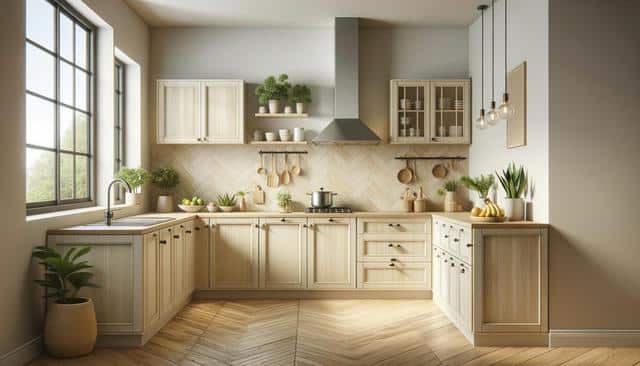Smart Colour Choices for Small Kitchen Cabinets
A kitchen remodel can breathe new life into your home. By updating appliances, cabinets, and countertops, you can create a more functional and stylish space.Planning ahead ensures the best results within your budget.

Why Colour Matters in Small Kitchen Spaces
In small kitchens, colour choices play a critical role in shaping the overall look and feel of the space. Unlike larger areas where bold tones might work well, compact kitchens benefit from colours that enhance openness and light. The right cabinet colour can make a small kitchen feel brighter, larger, and more inviting. Since cabinets often occupy a significant portion of the visual space, their colour can strongly influence the room’s perception.
Light and neutral tones are commonly used in small kitchens because they reflect natural and artificial light, making the room appear more spacious. By contrast, darker hues may absorb light and visually shrink the area. This doesn’t mean you must avoid all dark colours, but it’s essential to balance them with sufficient lighting and complementary design elements.
When planning your kitchen cabinet colours, consider the existing or planned wall shades, countertops, flooring, and how much natural light the space receives. A well-coordinated palette will ensure that all elements work harmoniously to create a cohesive design.
Classic Whites and Creams
White is a timeless option for small kitchen cabinets. Its clean and simple appearance makes it a popular choice for those aiming to create a bright, airy feel. Creams and off-whites offer a slightly warmer alternative while still maintaining the reflective quality that helps open up the space. These shades work well in both traditional and modern kitchen styles.
Advantages of using white or cream tones include:
- Enhancing natural light reflection
- Creating a sense of cleanliness
- Pairing easily with various countertop and backsplash materials
- Offering a neutral background for colourful accents or accessories
To prevent an all-white kitchen from feeling sterile, consider adding texture or contrast through hardware, mixed materials like wood or metal, or even open shelving with colourful dishware.
Soft Greys and Muted Pastels
Soft greys are a versatile choice that adds subtle depth without overwhelming a small kitchen. Muted pastel shades—such as pale blue, sage green, or blush pink—can introduce colour while maintaining a light and open feel. These tones provide a gentle departure from traditional neutrals and can add personality to the space.
Here are some pastel shades that work well in small kitchens:
- Sky blue for a calming, coastal vibe
- Sage green for an organic, fresh appearance
- Lavender or blush for a soft, cheerful touch
These colours pair nicely with natural materials like wood or stone and can be complemented with brass or matte black hardware for a contemporary touch. They also work well with white or light grey walls, creating a cohesive and understated look.
Two-Tone Cabinet Designs
An increasingly popular approach in small kitchens is the use of two-tone cabinets. This design strategy involves using one colour for upper cabinets and a different, often darker, colour for lower cabinets. This can help ground the space while keeping the upper half visually light and open. Two-tone schemes introduce variety and dimension without overwhelming the room.
Some effective two-tone combinations include:
- White upper cabinets with navy or charcoal lowers
- Cream tops with soft green bases
- Light grey uppers paired with darker taupe or walnut-toned lowers
This approach allows homeowners to incorporate deeper colours in a balanced way, adding interest and contrast. It also makes it easier to update part of the cabinetry in the future without a complete overhaul.
Accents and Finishing Touches
Even when choosing light or neutral cabinet colours, the finishing touches can significantly impact the overall design. Cabinet hardware, backsplashes, and wall colours all contribute to the kitchen’s character. For small kitchens, consider using accents to add visual interest without cluttering the space.
Options for accenting light cabinets include:
- Brushed metal knobs and handles for a sleek, modern look
- Coloured tile backsplashes that add vibrancy
- Open shelving with decorative items for personality
Don’t overlook the importance of lighting. Under-cabinet lighting or pendant fixtures can enhance cabinet colours and improve functionality. When used thoughtfully, these elements can elevate even the simplest cabinet colour choice into a standout feature of your kitchen.
Conclusion: Choosing Colours with Confidence
Choosing the right colours for kitchen cabinets in small spaces requires a mix of practical thinking and personal style. Light tones like white, cream, and soft grey help enhance space and brightness, while muted pastels and two-tone designs offer creative, stylish alternatives. Accents and hardware provide the finishing touches that can transform a simple kitchen into a warm and welcoming space. By planning carefully and considering how colours interact with light and other materials, you can make the most of every square foot in your kitchen remodel.